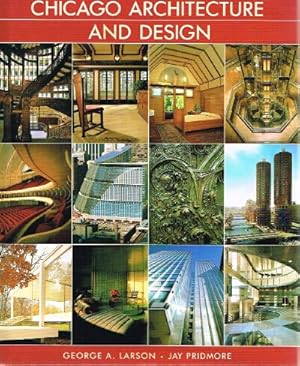Synopsis
As a result of the Great Fire of 1871, Chicago became a major creative centre of American architecture. Talented architects flocked to the city in the fire's aftermath, and made use of new technology, such as the fireproof steel frame and the safety elevator to create what is considered to be the world's first skyscraper, and ultimately change the look of 20th-century cities. These innovations - which required the planning of structures from the inside out - can be seen in this book. This volume chronicles the work of architects Louis H. Sullivan, Frank Lloyd Wright and Ludwig Mies van der Rohe, as well as that of H.H. Richardson, John Welborn Root, William LeBaron Jenny and their successors. More than 70 important buildings are pictured - most with one exterior image and several views of the interior - spanning Richardson's 1887 Glessner House through The Rookery, Robie House, the Carson Pirie Scott & Company store, 860-880 North Lake Shore Drive and the current work of Skidmore, Owings & Merrill, Kohn Pedersen Fox and Cesar Pelli, among others. Biographical information about the leading architects is integrated with the architectural discussion.
Reviews
This lavish, strikingly designed survey focuses on more than 70 Chicago buildings, with an emphasis on their interiors. The book traces the advent of Chicago modernism in the aftermath of the Great Fire of 1871, which gave a clean slate to architects Louis Sullivan and John Wellborn Root. Sullivan's disciple, Frank Lloyd Wright, dissolved the boundaries between interior and exterior space in suburban houses that transformed the idea of the single-family home. Mies van der Rohe, George and William Keck and Cesar Pelli, each in different ways, preserved the Chicago School's values of economy, natural light and simplicity. The 243 plates (108 in color) range from H. H. Richardson's 1887 Glessner House, modeled on a medieval English abbey, to Helmut Jahn's gleaming Xerox Centre, and spotlight such landmarks as the Marshall Field store, Marina City, the Railway Exchange, the Auditorium opera house and Eliel and Eero Saarinen's lyrical Crow Island School in the suburb of Winnetka. Larson is a Chicago architect, Pridmore a contributor to the Chicago Tribune.
Copyright 1993 Reed Business Information, Inc.
Chicago is known as an architect's city. Its buildings are bold and innovative, from the organic intricacies designed by Louis Sullivan around the turn of the century to the grand simplicity of Mies van der Rohe five decades later. Larson and Pridmore cover the evolution of modern architecture from the building boom after Chicago's Great Fire of 1871 through the 1992 completion of the Harold Washington Library. They review the careers of Chicago's seminal architects, including John Wellborn Root, William Holabird, Daniel Burnham, David Adler, Frank Lloyd Wright, and George Fred Keck and William Keck, "heroes of Chicago Modernism" during the 1930s. Moving forward in time, they discuss the work of Skidmore, Owings, and Merrill, the city's most influential builder during the 1960s and 1970s, as well as the controversial and flashy structures of Helmut Jahn, particularly the peculiar State of Illinois Building, which sits amid traditional downtown towers like a captured space station. Many of the 243 illustrations display the gracefully designed interiors of Chicago's finest buildings, a facet of architecture often neglected in such surveys. Donna Seaman
This book is not to be confused with the almost identically titled Chicago Architecture and Design, 1923-1993 ( LJ 10/1/93), the sequel to Chicago Architecture 1872-1922: Birth of a Metropolis (Prestel, 1987). These two volumes catalog exhibitions at the Chicago Art Institute celebrating the centennial of the Chicago School of Architecture and the great World's Columbian Exhibition held in The Windy City in 1893 along with more recent architecture extending up to the present. What distinguishes the book at hand from its more scholarly cousins is its emphasis on architectural interiors. It is well written and beautifully illustrated by photographs from the famous collection of Hedrich-Blessing. Highly recommended for architecture libraries and larger art collections.
- Peter Kaufman, Boston Architectural Ctr.
Copyright 1993 Reed Business Information, Inc.
"About this title" may belong to another edition of this title.
